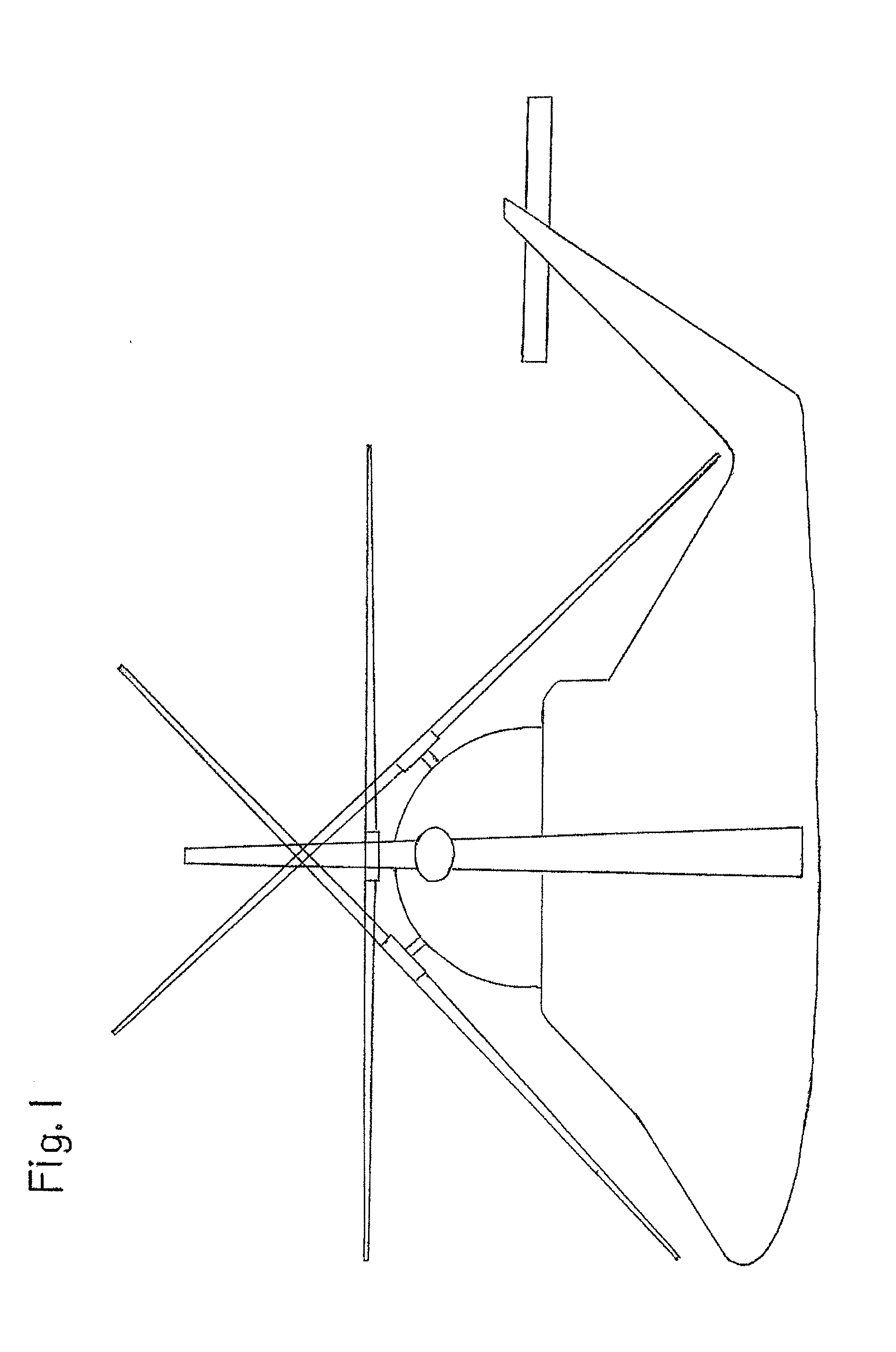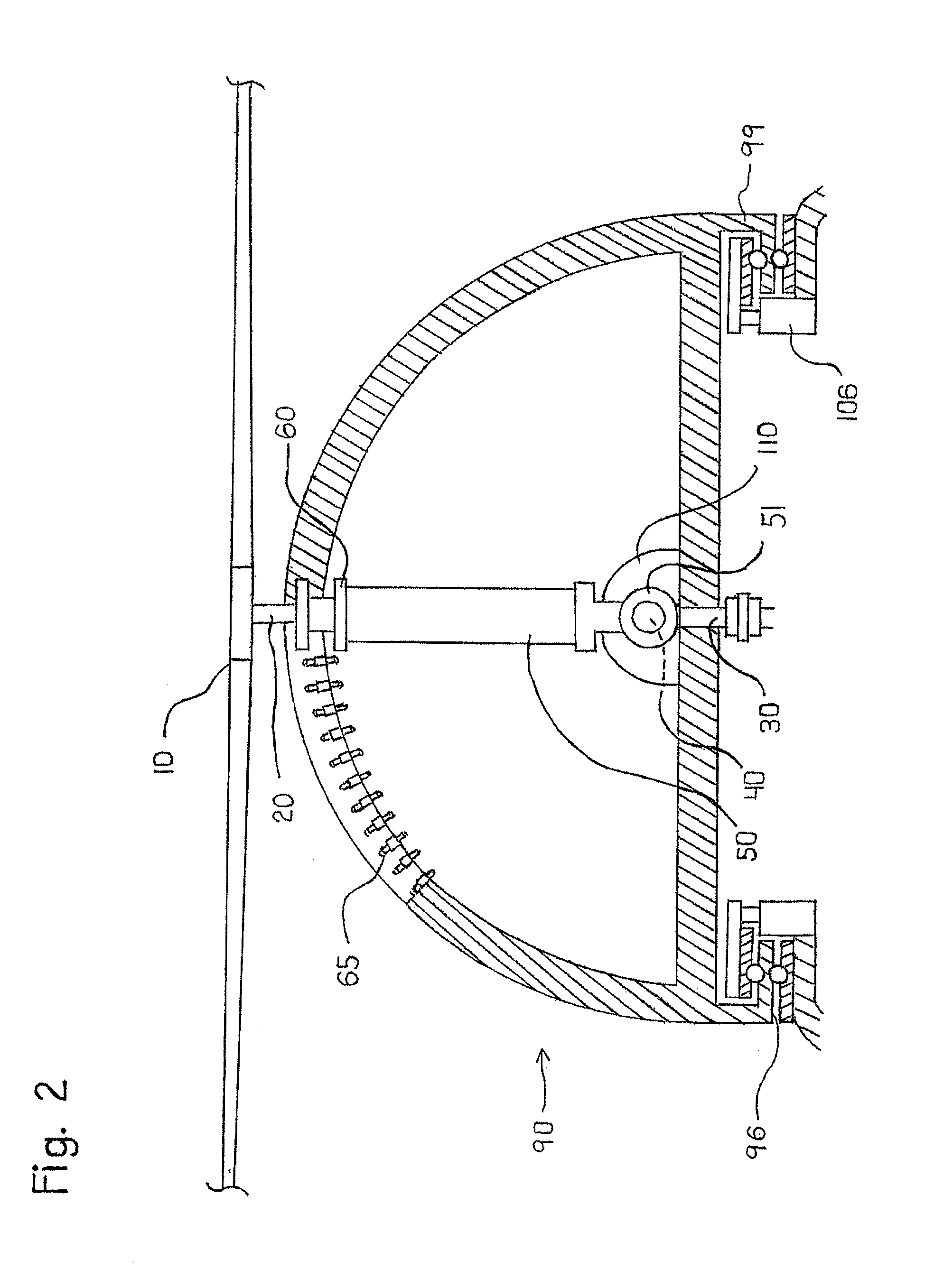Direct orientation vector rotor
a rotor and vector technology, applied in the field of direct operation of rotary wing aircraft, can solve the problems of stalling, decrease in total lift, unbalanced relative flow of air passing over the rotor disk during flight, etc., and achieve the effect of simple and fast rotor speed
- Summary
- Abstract
- Description
- Claims
- Application Information
AI Technical Summary
Benefits of technology
Problems solved by technology
Method used
Image
Examples
Embodiment Construction
[0030]Overview:
[0031]In FIG. 1, a DOVER system is shown displaying a 360° freedom of movement of operation of the rotor as delineated by an inclination of 45° at forward, aft, and lateral positions from the horizontal on a traditional tail rotor design helicopter, although the DOVER also is applicable to fenestron shrouded tail rotor and No Tail Rotor (NOTAR) blown-air designs. In alternatives, the total possible degree of inclination from the horizontal may vary depending on the configuration of the helicopter, in order to prevent the rotor from hitting the helicopter fuselage. In addition to the DOVER system being oriented to assist in landing operations, providing various orientations of the rotor may also provide for increased performance in terms of the speed and maneuverability of the aircraft including tighter and higher velocity cornering and the static orientation of the aircraft to enable weapon systems operations or other types of operations where the position of the airc...
PUM
 Login to View More
Login to View More Abstract
Description
Claims
Application Information
 Login to View More
Login to View More - R&D
- Intellectual Property
- Life Sciences
- Materials
- Tech Scout
- Unparalleled Data Quality
- Higher Quality Content
- 60% Fewer Hallucinations
Browse by: Latest US Patents, China's latest patents, Technical Efficacy Thesaurus, Application Domain, Technology Topic, Popular Technical Reports.
© 2025 PatSnap. All rights reserved.Legal|Privacy policy|Modern Slavery Act Transparency Statement|Sitemap|About US| Contact US: help@patsnap.com



